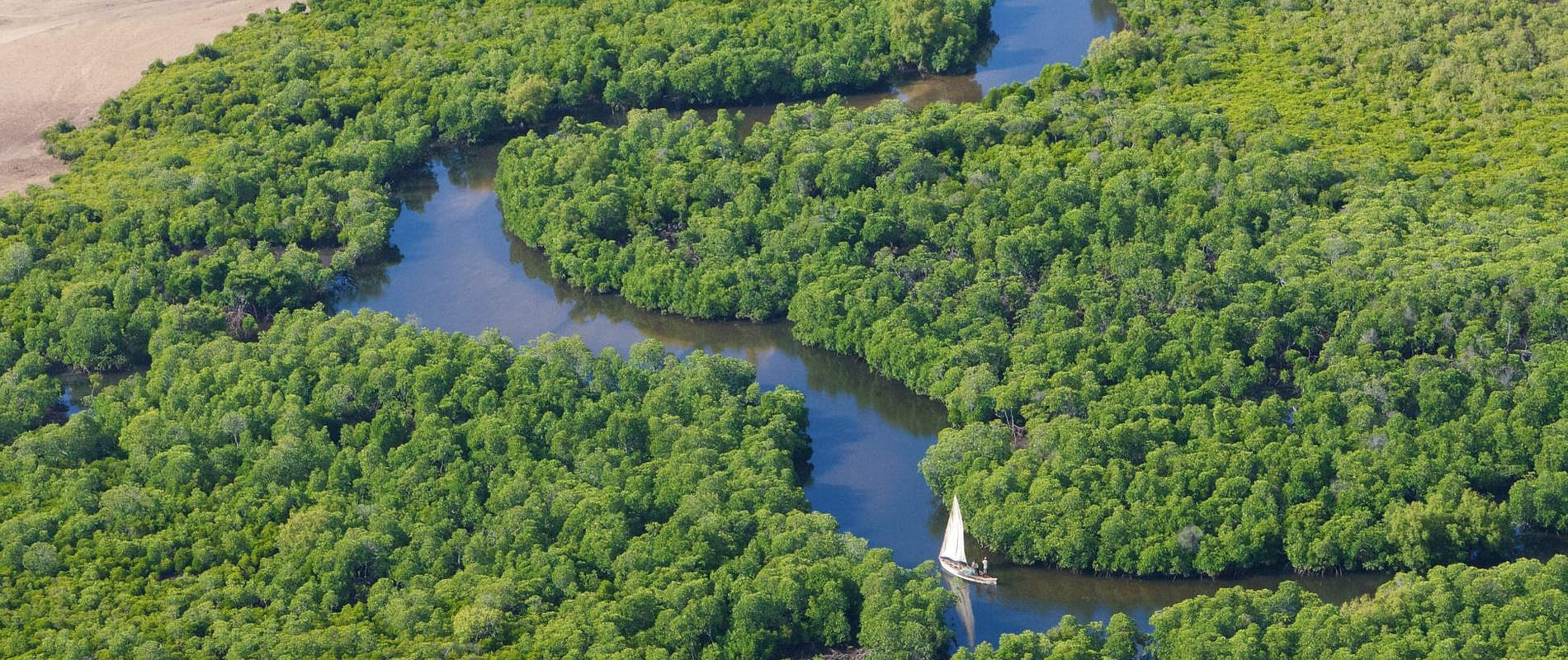It's been less than a year since the Sheldrick Trust and Lamu Conservation Trust partnered with Eden Reforestation Projects on a mission to regenerate coastal mangroves and almost 5 million mangroves have already been planted in Lamu county.
This phenomenal achievement is testament to our commitment to, and knowledge of, this critically important region on Kenya's northern coast, and Eden Reforestation Project’s expertise in the regeneration of forests and mangroves. Alongside the dedication and hard work of the local community members employed by the program, who are individually planting up to 1,200 mangroves a day.
The replanting began along the Milihoi channel in July 2020, where an area of 159 hectares had been completely deforested over the years, exploited for mangrove poles, charcoal and other local uses. In the same area, over 1,000 hectares was severely degraded and in need of enrichment planting. A team of 20 people, all locally employed, have now planted a staggering 1.9 million mangroves in the channel of Milihoi, which penetrates into Amu Ranch, a 63,000 acre wildlife habitat that we protect in collaboration with the Lamu Conservation Trust.
With excellent progress being made in Milihoi, Eden Reforestation Projects expanded the planting to Manda, which has seen more local people employed and a further 3 million mangroves being planted. Between the efforts in Milihoi and Manda, more than 49,200 work days have been created, while once decimated mangrove forests are being afforded a new lease of life, to the benefit of all of us.


In addition to being the first line of defence for coastal communities; stabilising shorelines by slowing erosion and providing natural barriers to protect against flooding, Mangroves are biodiversity hotspots, home to an incredible array of species. They provide nesting and breeding habitat for fish and shellfish, migratory birds and even sea turtles. With fishing at the heart of Lamu County, our ability to ensure the robustness and biodiversity of the coastline cannot be overestimated, as it impacts the livelihoods of so many in the region. Importantly too, they are incredible at storing carbon, and can store more than three times the carbon of an equivalent area of tropical rainforest, which makes them essential to fighting climate change.

